After we have already introduced you to the Carpathians and Transcarpathia in detail, today we would like to take you to the inhabitants of this unique stretch of land. The famous Ukrainian writers Lesja Ukrajinka and Iwan Franko were already fascinated by the way of life of the Hutsuls, who even today lead a much more traditional life than people in other parts of Europe. So it’s high time to take you on a journey to Hutsul land and introduce you to this mysterious people.
Who are the Hutsuls and where do they live today?
The Hutsuls are a mountain people living in the Carpathians. They settle in the border region between Ukraine and Romania in the valleys of the rivers Pruth and Cheremosh (we present you the most beautiful places in the land of the Hutsuls below). Today, on the Ukrainian side, there are still about 60,000 Hutsuls living around Kosiv, Verkhovyna and Rakhiv on the Romanian-Ukrainian border. On the Romanian side, there are significantly fewer.
The life of the Hutsuls has little in common with the culture of the Ukrainian majority society. Just like the neighboring Boiks and Lemkos, the Hutsuls have their own language, music, traditions and costumes. There are also differences within the Hutsul community; for example, Hutsuls in the Carpathians speak a different dialect than their relatives in Transcarpathia. Their clothing also differs in terms of their colors and patterns. Older Hutsuls, for example, are still able to identify a traditionally dressed Hutsul as belonging to a particular village on the basis of his costume, even at a greater distance.
Sheep breeding and forestry are still the most important activities of the Hutsuls today. Sheep and their products (wool, milk, but also dairy products such as urdu and brynza) played and still play an important role in the economic survival of entire families, as we will see below.
What role do traditional ways of living still play in Hutsul life today?
To answer the question briefly: a big role. All festivals like baptisms, weddings or funerals are celebrated in a traditional way and these traditions are still passed on. Or, as Sasha Ihnatyuk describes it “You could even put it that our life is a tradition”. Of course, the modern world has also now entered the lives of the Hutsuls. This is mainly due to the fact that many young Hutsuls now study and work in Ivano-Franvisk, Lviv and other places in the country, where they naturally do not go to the office or university in the traditional Hutsul costume. This is a development that can also be felt elsewhere and by no means only in Ukraine.
The History of the Hutsuls
The Hutsuls lived a relatively undisturbed life for centuries, cut off from the outside world. The Hutsul culture was able to preserve its independence for so long also because the Carpathians were cut off for a long time and many people lived high in the mountains.
The more the Hutsuls came into contact with the outside world, the more problems such as oppression by large landowners arose. As a result of the Polish partitions, the settlement area of the Hutsuls came under Austrian control. At that time the Hutsuls simply called themselves “Christians” or “inhabitants of the mountains”. Many Hutsuls left their homeland at that time, moved to the cities or straight to overseas. In the past centuries, however, many also moved to the valleys of the Pruth and Cheremosh rivers, where they also came into closer contact with the modern world.
Subsequently, there were repeated uprisings in the region, which frequently changed its rulers. When the area was to become part of Hungary after World War I, they launched an uprising and went into battle together with Ukrainian troops, but were ultimately defeated by Romanian troops. From then on, the Hutsul settlement area was divided between Czechoslovakia and Romania, Poland and later Hungary. However, these turbulent times also resulted in a small economic and cultural boom in the region, which was brought to an abrupt end by the Second World War. After the Second World War, the Soviet Union annexed the territories completely, with the exception of the part that still belongs to Romania today.
In Soviet times, the Hutsul culture was at best smiled at, but not promoted separately. Since the attainment of Ukrainian independence, Hutsul culture can once again be openly cultivated and today there are numerous initiatives that take care of the interests of the Hutsuls.
Romania’s accession to the EU in 2007 could have far-reaching consequences for the culture of the Hutsuls, because for about 15 years now the external border of the EU has been running through the country of the Hutsuls. Due to the more difficult border crossing, families were once again separated from each other and an exchange between the two sides became more difficult.
The Culture of the Hutsuls
Ghosts and Shamans
The traditional Hutsul way of life is nowhere else more evident than in the world of the supernatural. In the past, it was quite These people, called molfar, are said to have magical powers, and even today they exist in isolated cases. Of course, this does not have much to do with the Greek-Catholic or Ukrainian-Orthodox teachings, but here in the Carpathians the clocks tick differently and there are still people who are supposed to be healed in exotic procedures with herbs and smoke, just like exorcisms. Cloud charmers, fortune tellers and sorcerers, on the other hand, have become rarer.
Shamans also play a special role in the 1964 film “Fire Horses” (original title: Tini Sabutich Predkiw, literally: “The Shadows of Forgotten Ancestors”). The Soviet film was banned from theaters because it did not meet the state’s specifications. Internationally, however, it became a great success and won several awards. Set in a Hutsul village, it deals with the tragic love story between Ivan and Marichka, with a shaman playing a crucial role (we won’t spoil more here, because the film is really worth seeing).
Life in the mountains
In the land of the Hutsuls, agriculture was uncommon for a long time, while herding sheep played a paramount role in the economic survival of the families. Even today, there are many elderly Hutsuls who live in the valleys only in winter and spend the summer months in the mountains, where the sheep find sufficient food. Traditionally, the sheep drive is celebrated with a big feast in the village. Many sheep owners then give their flocks into the care of head shepherds, who then give a fixed share of milk and cheese to the shepherds.
In the mountains the shepherds even today often live in alpine huts, which are simple log buildings. At lower altitudes, the Hutsuls often live in so-called hraschdas, an enclosure that, in addition to the residential buildings, also included economic rooms. And although (or perhaps because) the Hutsuls live somewhat remotely, their hospitality is legendary. Even foreign visitors are welcomed with open arms and often invited to dinner; they are proud of their traditions and would like to show them to outsiders as well.
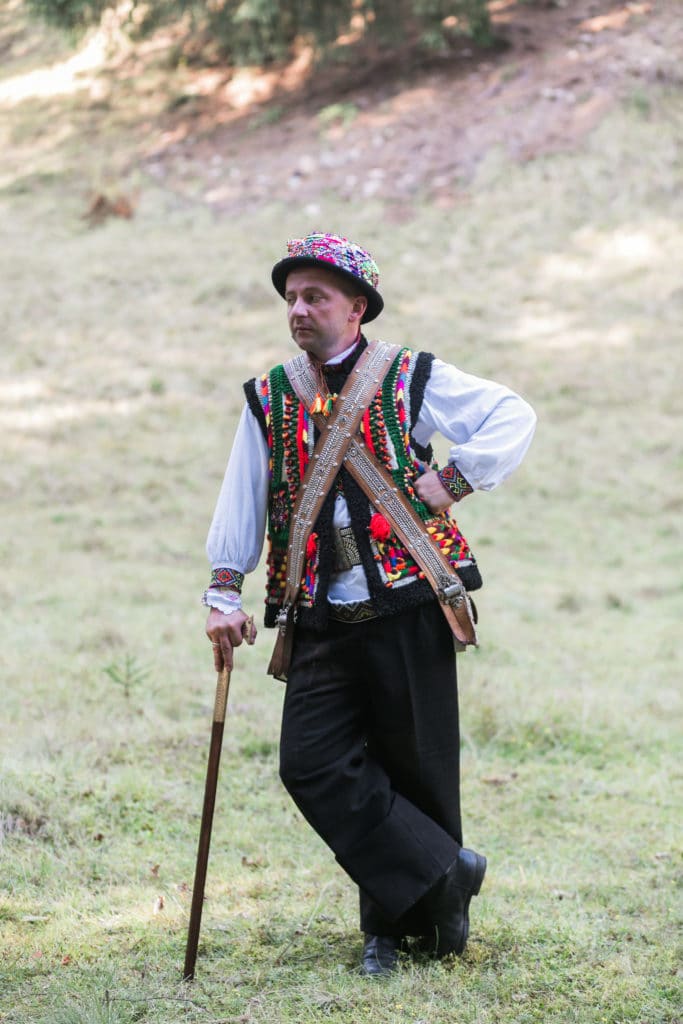
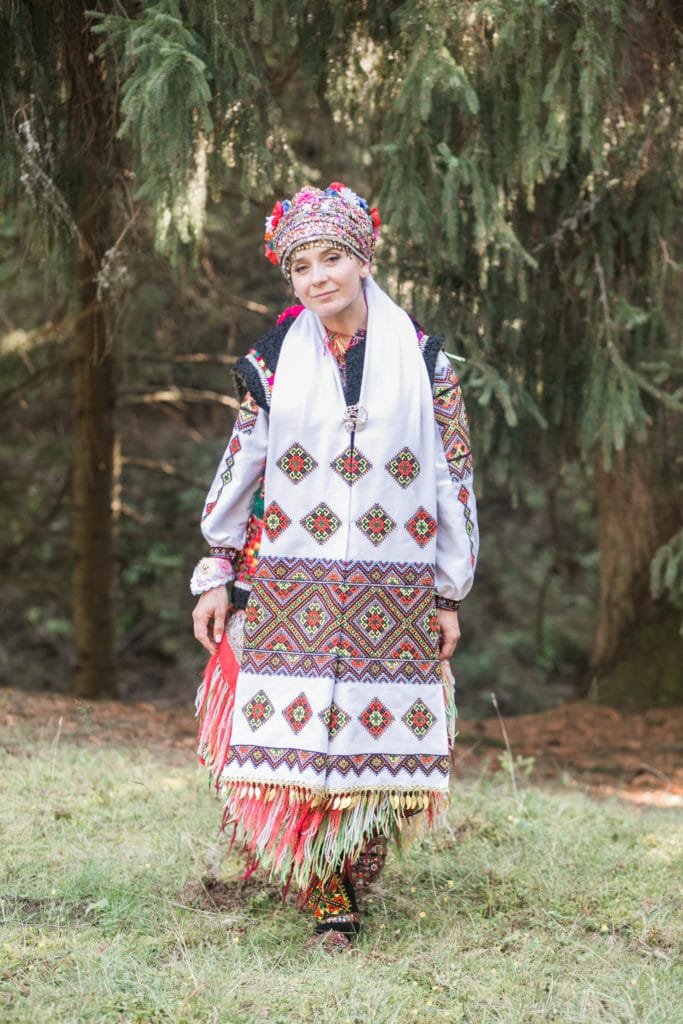
Hutsul costumes
The Hutsul traditional costumes have a great importance in the life of the Hutsuls. What makes them special is the way they are made, because they are all created by hand and from sheep’s wool. In the past, even pants were made of this material. And even though for non-experts the patterns and colors, which are painstakingly worked in by hand, may well resemble those of Ukrainian traditional costumes, they are an expression of a centuries-old local tradition that exists only here.
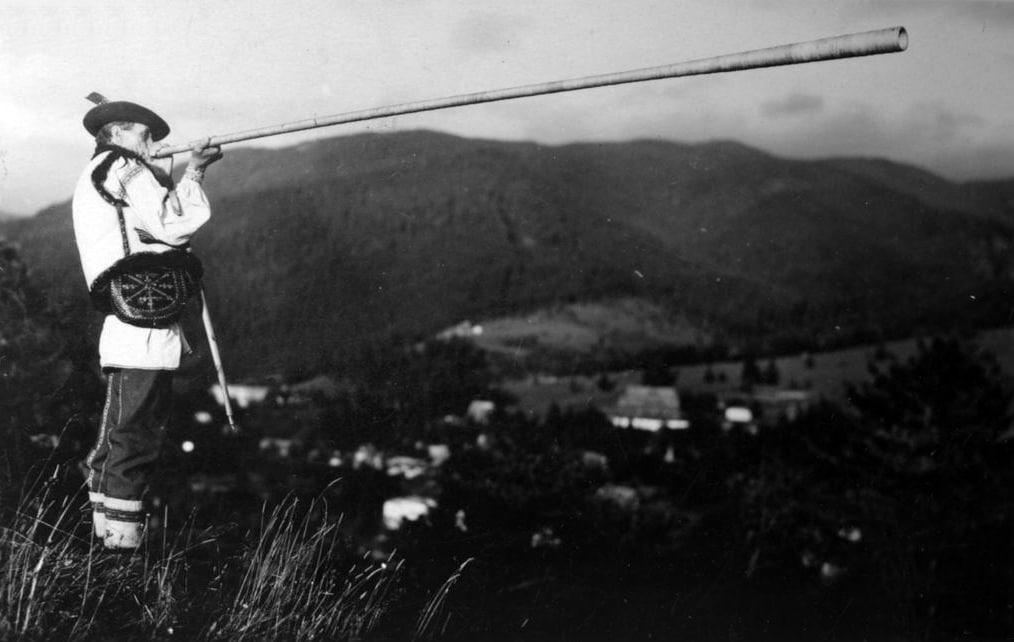
The Music of the Hutsuls
“The Hutsuls are a musical people,” says Sasha Ihnatyuk, “who can play many instruments”. And indeed, there is no village festival where at least one person does not unpack their cymbal, violin or sopilka, a split flute. And since not only clothes are made from the goats and sheep, you can often find the koza, a kind of Hutsul bagpipe. And nowadays the handmade instruments are even exported all over the world and there are own bands in the USA and Canada playing on the traditional musical instruments.
The most famous instrument is the Hutsul alphorn, the trembita. This elongated horn is played today mainly for folkloric purposes, but in the past it had a very practical function. Not only did it serve the shepherds as entertainment during boring evenings, but also as a means of communication to reach more distant shepherds or the shepherd dogs. Spruce wood is used for the trembitas. Experts prefer the wood of trees previously struck by lightning when building their instruments, because this is said to have a positive effect on the sound.
Ruslana – And suddenly all Europe knows the Trembita
The singer from Lviv was able to win the Eurovision Song Contest in Istanbul in 2004, surprising many. In her song Wild Dances, she also uses Hutsul motifs; a trembita can be heard at the very beginning. The dancers’ liberal outfits have little to do with the traditional costumes of the Hutsuls. And suddenly millions of viewers in front of their TV sets were wondering what strange instrument was being played at the beginning.
Myroslav Skoryk
Myroslav Skoryk was a Ukrainian composer who unfortunately passed away in 2020. He studied music in Lviv and Moscow and later worked in Kiev. In addition to violin concertos, chamber music works and choral songs, he was also known for the film music for “Fire Horses” and especially his “Hutsul Triptych”. In this work he combined traditional Hutsul folk tunes with modern classical music, thus creating a monument to the music of the Hutsuls.
Hutsul Tools and Weapons
Due to the cut-off location, outside influences were extremely rare. For the Hutsul culture, this also meant that they had to provide for themselves for a long time. For this purpose, they made their own tools and weapons. In the past, every Huzule had a sokyra or bartka on his belt, i.e. a small axe. They served not only for self-defense against animals or bandits, but also as a practical universal tool. In the course of time, the axes then also fulfilled decorative purposes and became more and more splendidly designed. In addition, there are many other tools that were decorated with ornaments.
The Malanka Feast
Of course, the Hutsuls also celebrate festivals such as Christmas or Easter. But they are best known for the Malanka festival, which celebrates the end of the old year in mid-January (according to the Julian calendar common in the Eastern churches). Even beforehand, singing groups of men in traditional costume parade through the villages and are warmly welcomed by the residents with food and drink, serving up many delicacies of Hutsul and Ukrainian cuisine.
The festival itself is somewhat reminiscent of the Fastnacht in southern Germany and Switzerland. People dress up and wrap themselves in sometimes scary costumes and masks. Especially the figures of the devil, death and the soldier are popular. Afterwards, the people go through the village and, as in the south of Germany, the dressed-up creatures get up to all kinds of mischief and sing to welcome the New Year. A few days later, the baptism of Jesus is celebrated, with hardy people drilling a hole in the ice of lakes and rivers and climbing into the water. Anyone who has spent a winter in Ukraine knows that this is no walk in the park.
Around the same time – at least in some villages – Hutsul women also have wax crosses blessed in church, which are then stuck on the front doors in the village to ward off evil spirits and witches.
The Hutsul Wedding
“Once in your life you should have seen a Hutsul wedding,” claims Sasha Ihnatyuk. And he is probably right, because on no other occasion can you see so much that makes the culture of the Hutsuls so unique. The many beautiful traditional costumes are only one element here. The wedding couple, of course, wears the most magnificent traditional costumes, which were made especially for this purpose. Even the stockings must be new! Special importance is attached to the bride and groom’s headgear. One(s) still wears hat here, while the bride is adorned with a hood made with loving care.
Also important is a handmade, wide cloth ribbon, which is artistically decorated and on which the bride and groom stand during the ceremony. It is then taken home and guarded like a treasure, as it symbolizes the eternity of the bond of marriage. During the wedding, the Hutsul instruments are then used and traditional wedding songs are played. The rest is done in a similar way to the rest of Ukraine and includes a feast lasting several days, during which the tables bend and abundant horylka flows. Then often also with also the Arkan is started, a traditional Hutsul dance.
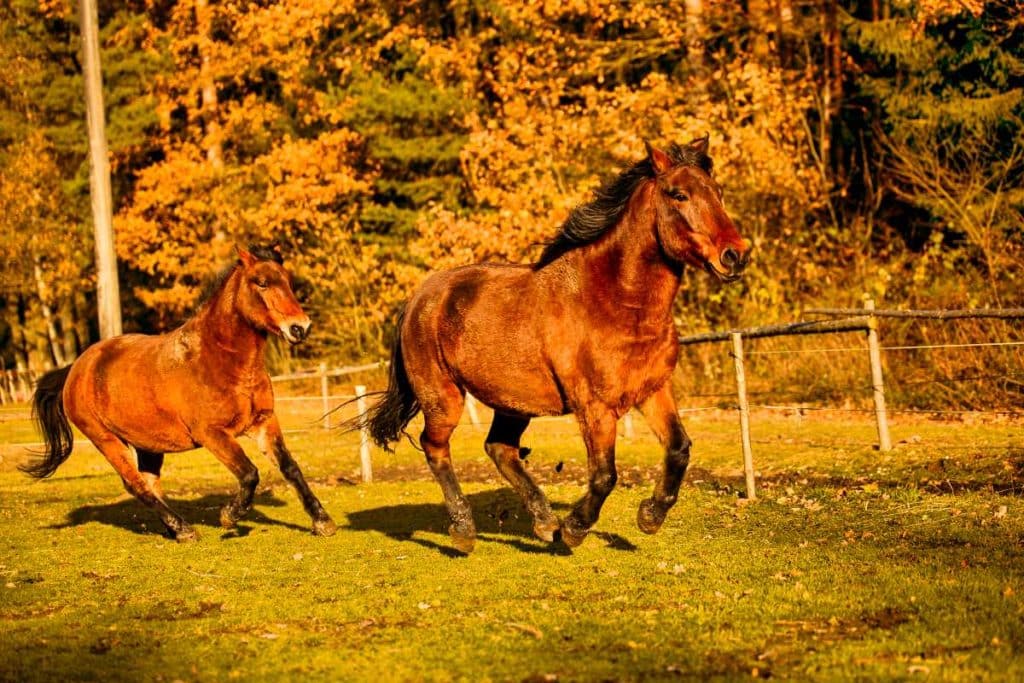
The Hutsuls and Their Animals
The name Hutsul refers not only to a member of the Hutsul people, but also to a pony race. The mostly dark steeds are considered to be robust, long-living, strong and have a friendly character. In the Carpathians, horses were essential for the survival of the people and have always been faithful companions of every Hutsul. The horses are considered to be extremely sociable, loyal and friendly to children. In the past, the predecessors of the Hutsul horses lived wild in nature, before they were domesticated and crossed with other breeds in the 19th century under Austrian rule. The Hutsuls use the ancestors of the today’s Hutsul horses there freely already for centuries as farm horses. The Hutsul horses developed after the crossing to the export hit and are bred meanwhile also in Romania, Poland, Hungary and Slovakia.
But also other animals such as sheep and cows were and still are found on almost every farm, since they used to ensure the survival of the family and today the sale of their products serves at least as a secondary income. People still live in harmony with nature and try to treat the animals well and to use them completely after their death. The love of the Hutsuls for their animals used to go so far that at Christmas they always fed the animals in the barn before serving Christmas dinner.
The Language of the Hutsuls
Opinions differ as to whether Hutsul is a language in its own right or a dialect. Hutsul is closely related to Ukrainian, but there are also numerous words from Romanian that have made it into the Hutsul language. In the course of time, Hutsul has been exposed to strong assimilation tendencies, but has managed to preserve its own character until today and is not just a dialect spoken by a few enthusiasts, but an integral part of everyday culture. Here too, however, one can feel the impact of the modern world on the culture of the Hutsuls. Thanks to the Internet, studies in other parts of the country and television, the number of Hutsul speakers is unfortunately tending to decrease.
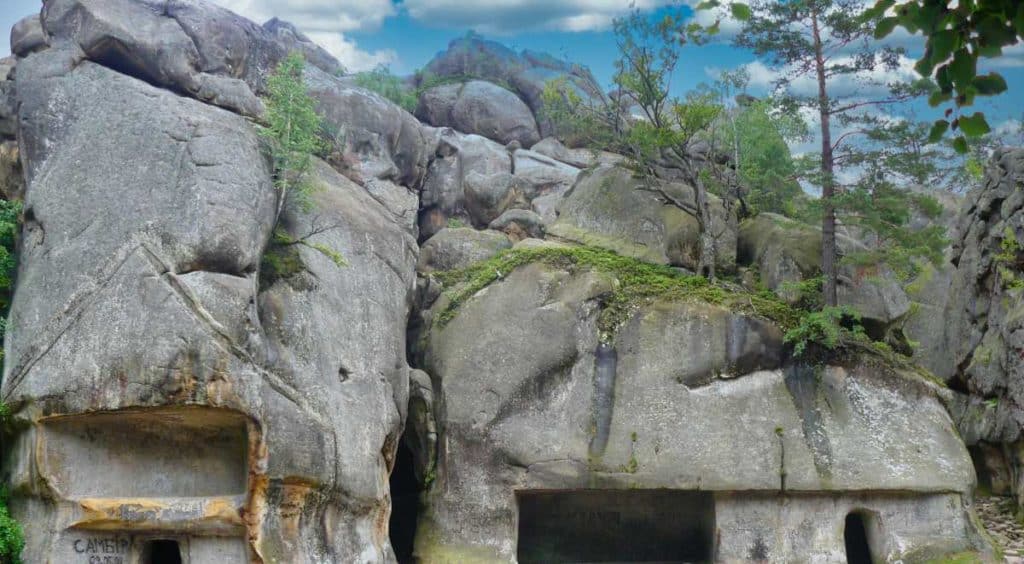
Oleksa Dowbush – The Hutsul Robin Hood
An important role in the history of the Hutsuls was played by the so-called Oprishks. They were bands of robbers who lived by raiding trade caravans, but also attacked noble homesteads. Since they were able to resist Polish and Austrian military service for a long time and often shared their booty with the poor population, the guerrilla-like Oprishks were very popular among the population. Their most famous representative was the legendary Oleksa Dovbush. He lived in the 18th century and knew his trade. He shared his riches partly with the population, but a part of the booty he is said to have enchanted and hidden in the Carpathians. Maybe you will be lucky during a hike and come across Dovbush’s treasure …
Dovbush was later sung about in numerous songs and also plays an important role in Polish and Romanian folklore. By the way, he could never be caught. As befits a true outlaw, he escaped the rope and died a different death: He had a mistress and was murdered by her enraged husband. Today people still tell stories about the Hutsul Robin Hood, to whom the great Ukrainian literary figure Ivan Franko dedicated one of his works. Several streets in Ukraine bear his name, but the Dovbush rocks are also named after him. Dovbush is said to have hidden in them. Today they are a popular tourist attraction, but they are not located in Hutsul land.
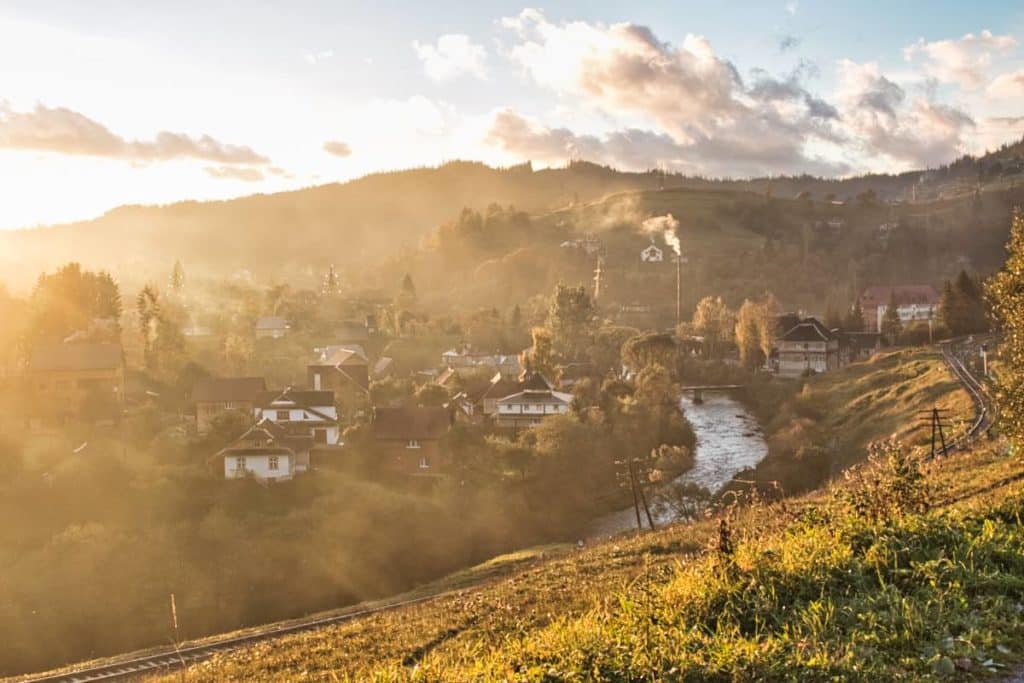
Places worth seeing in the land of the Hutsuls
Verkhovyna
Verkhovyna on Chorny Cheremosh has many hotels and other guest accommodations as well as some of the most beautiful museums in the Carpathians. In the Museum of Hutsul Culture you can learn everything about this ethnic group that lives here in the mountains and speaks its own dialect. In the Museum of Musical Instruments you can see demonstrations of typical Carpathian instruments, such as the trembita, or play them yourself. The Museum of the Magic of the Hutsuls is also very interesting. Here you will learn a lot about the Hutsul magicians and shamans, who still have their followers despite the deep Christian faith of the Hutsuls.
Near the center, Sasha Ihnatyuk runs his trout farm, which you are welcome to visit. In the Fazenda Fishbone you can fish yourself and afterwards have the fish prepared in the Hutsul way with local side dishes like a Hutsul polenta. You can also spend the night here.
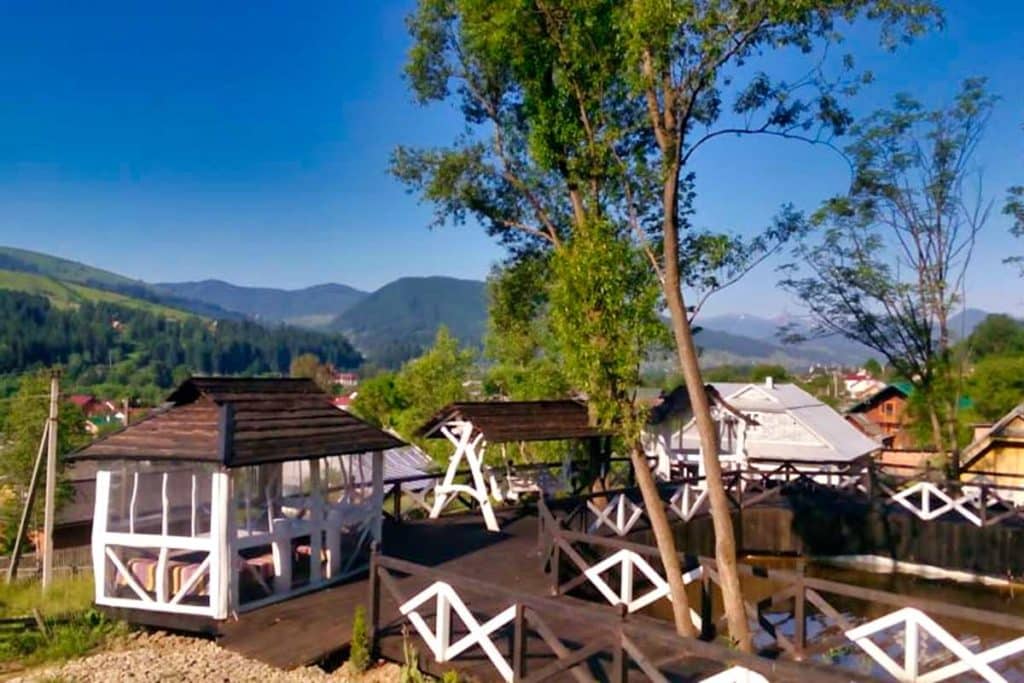
The Center of Europe
South of Rakhiv lies the center of Europe! At least, according to Captain Netuschill, the Austrian surveyor who located the center of Europe here in 1887. Interestingly, there are a number of countries that claim the center of Europe. Geographers have already come up with the idea of declaring Dresden, Hungarian villages, a plot of land on Saaremaa and a village in Lithuania to be the center of our continent, depending on what one counts as Europe. And Rakhiv also adorns itself with this title, which is reminded by a sandstone monument inscribed in Latin and a modern stainless steel construction right next to it.
Kosiv
Kosiv is considered the unofficial capital of the Hutsuls and is especially known for its market. Countless stalls with carpets, instruments, sheep’s cheese, handicrafts, honey and other foodstuffs – you will find all this and much more at the town’s craft market. Every Saturday morning, vendors come from sometimes several hundred kilometers away to sell their handmade products. Prices are low and you can buy real Ukrainian jewelry here.
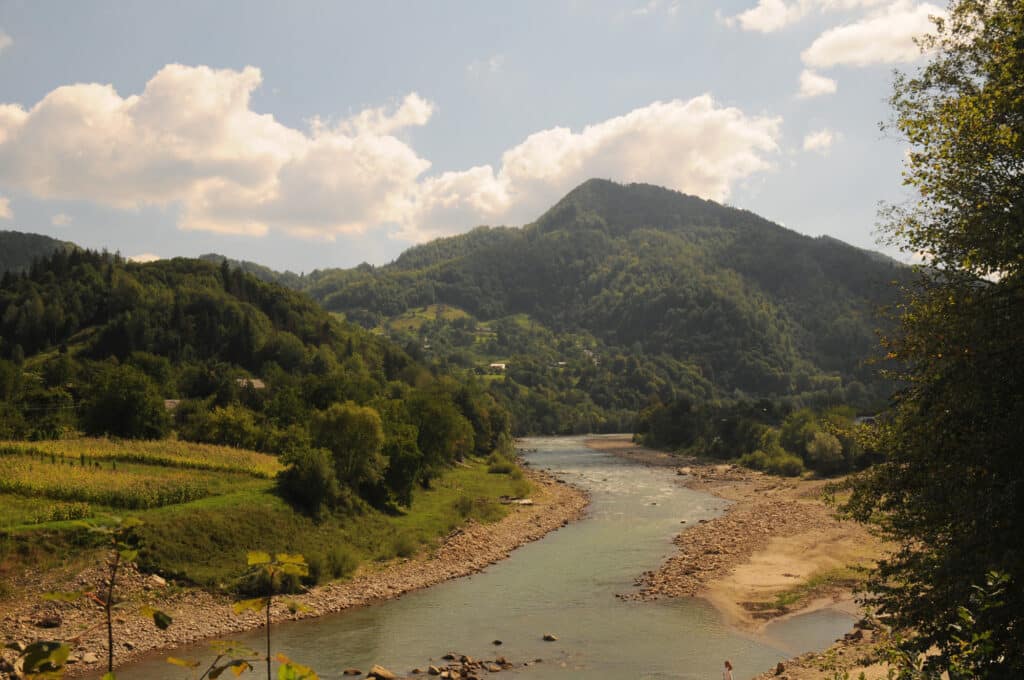
National Park Hutsul Land
A real paradise for hikers is the National Park Hutsul Land, which was established in 2002. Covering an area of 32,000 hectares, there are waterfalls, an arboretum park, a swan lake, picturesque rocky and forest landscapes and much more to discover here around the rivers Luchka, Pistinka, Rybnitsa, and Cheremosh. The national park also includes a protected area where nature can develop undisturbed. Over 2000 different animal species live here, including brown bears and forest cats. In specially designated areas there are several hotels, cottages and campsites where you can spend your vacation.
Book recommendations
No products found.
The book examines the relation between Ukraine’s Hutsuls and the Carpathian landscape between 1848 and 1939.
No products found.
This book describes the Carpathians and its people, the Górale, Hutsuls, Boikos, and Lemkos
How did you like our trip to the land of the Hutsuls? Let us know and write us a comment! And feel free to follow us on Facebook or Pinterest to always see the latest articles. Many thanks to my good friend Nadya Plikhtyak for her numerous tips, to Maryna Domanska for the photos and especially to Sasha Ihnatyuk for the interview and all the info!


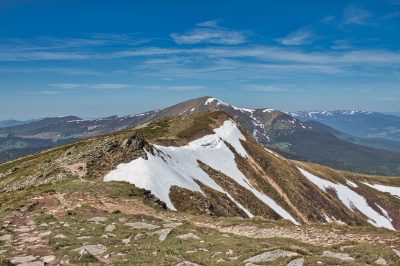
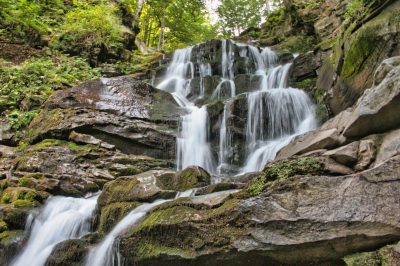
Nice article. Is Jaremcze in the Hutzul region?
Thank you very much Rolfe. That’s a really tricky question. I’d say it’s a little north of the Hutsul country, but as you know there are no real boarders here.